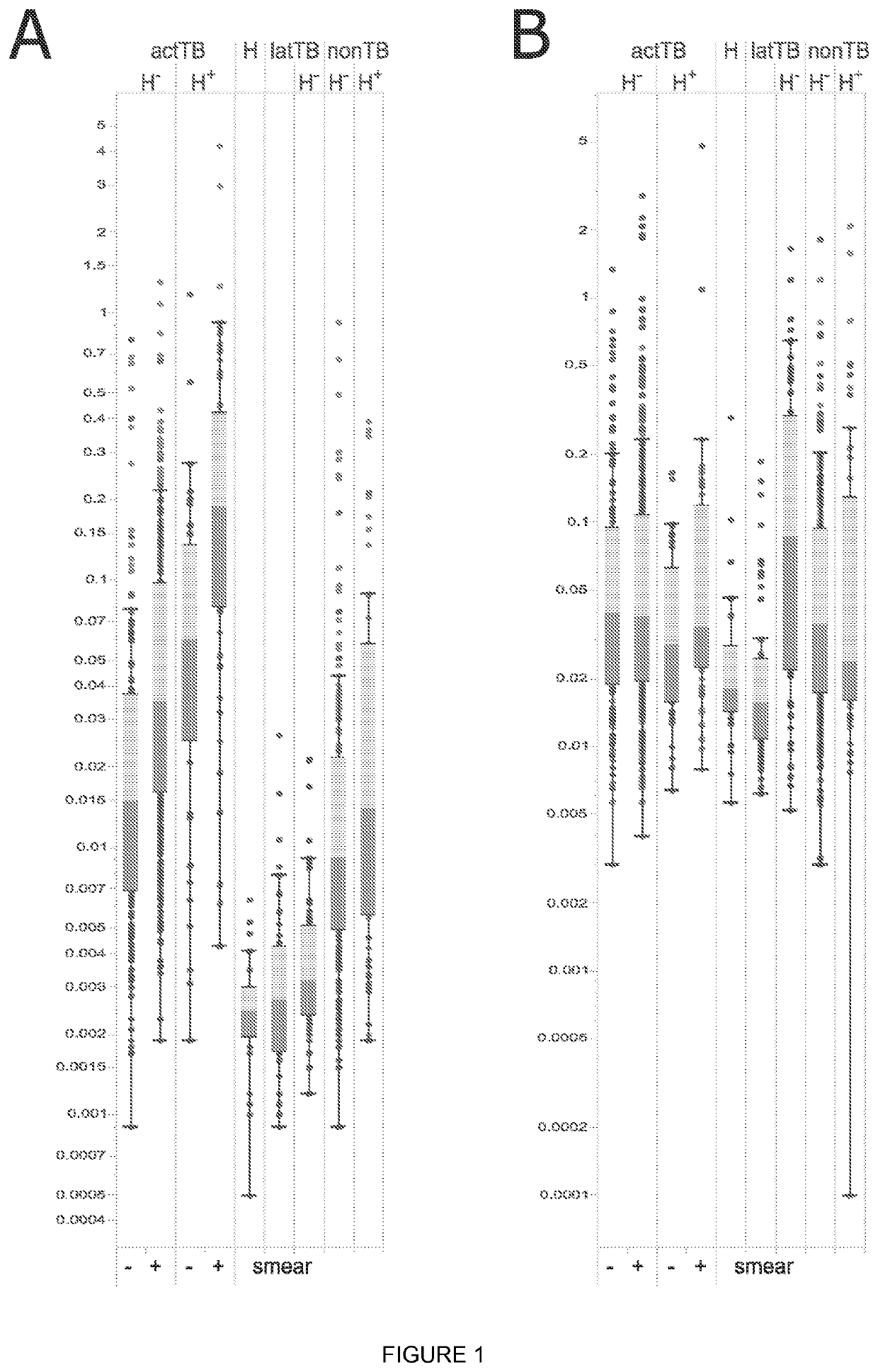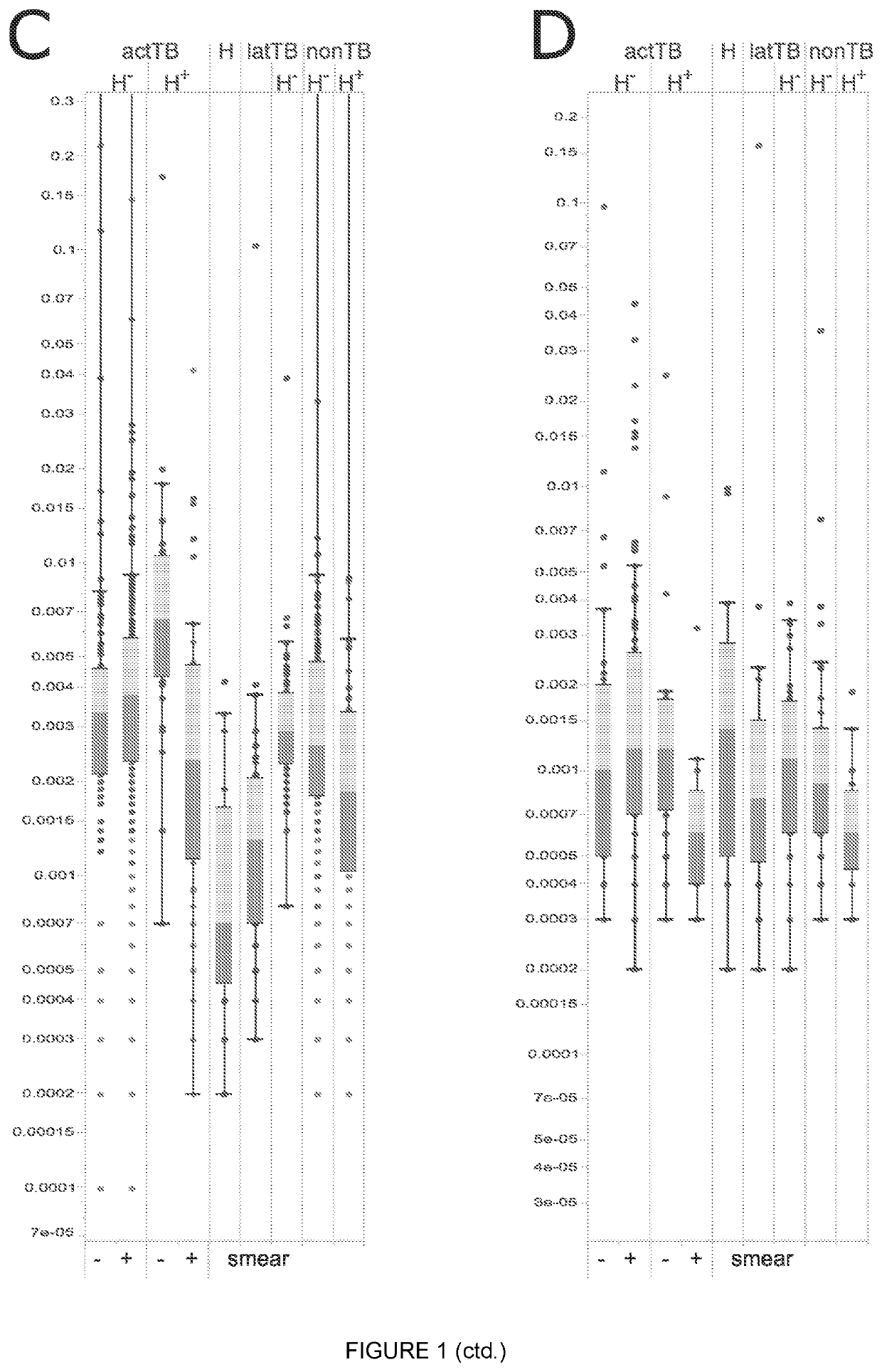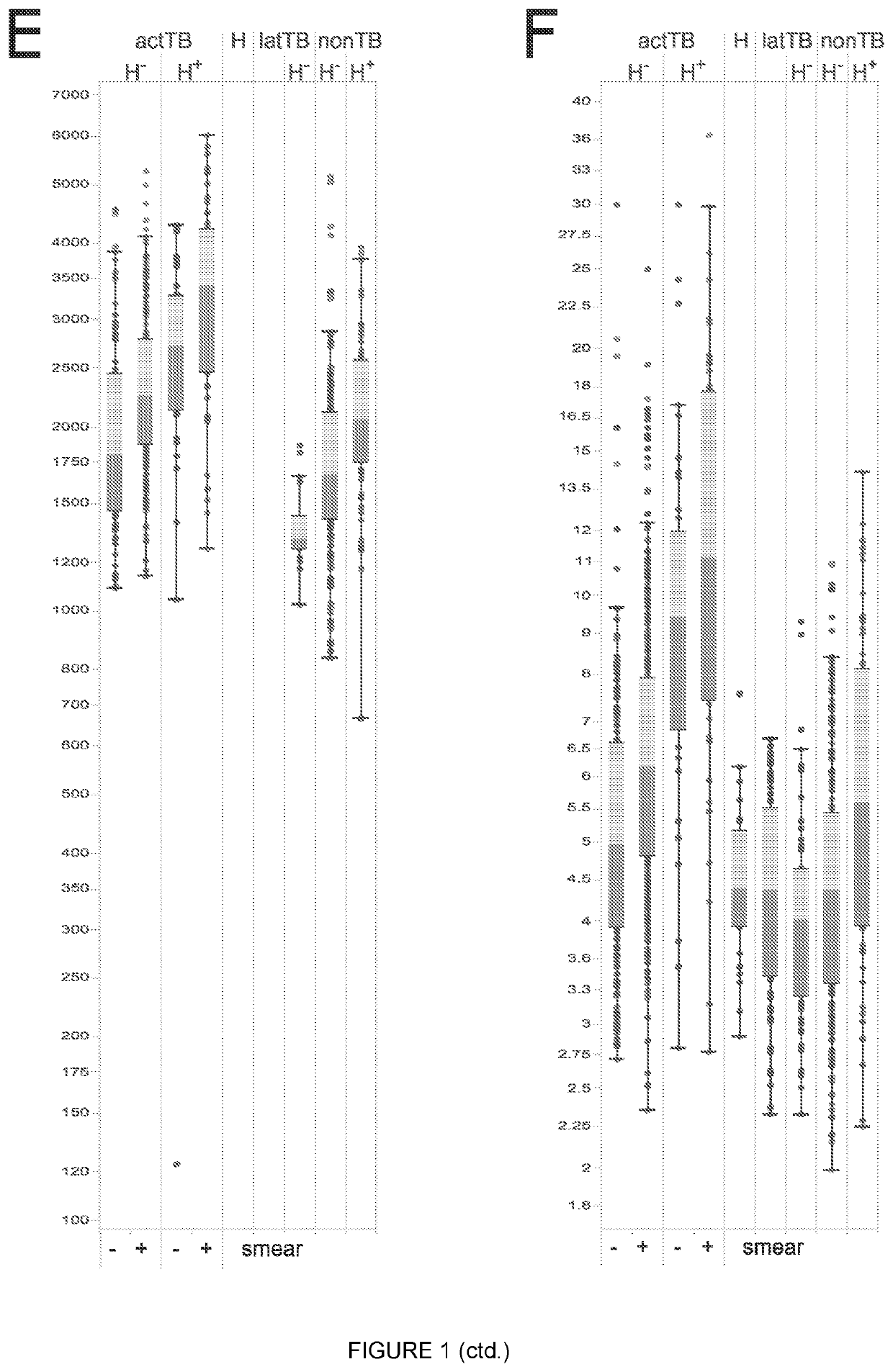Biomarkers
a biomarker and panel technology, applied in the field of biomarkers, can solve the problems of insufficient understanding of the immunological response and pathogenesis of i>mycobacterium tuberculosis /i>, suboptimal existing diagnostics and treatment methods, and difficulty in culturing this slow-growing bacteria
- Summary
- Abstract
- Description
- Claims
- Application Information
AI Technical Summary
Benefits of technology
Problems solved by technology
Method used
Image
Examples
example 1
ce of Predictive Models in Different Diagnostic Groups—IDEA Cohort
[0296]The percentage of correctly diagnosed patients in each group (as stratified above) was calculated from predictive models generated using both the 5BM and 7BM biomarker panels. Table 4 shows the predictive performance for each of these models and biomarker panels. As can be seen, predictive models generated using both biomarker panels are able to correctly diagnose active TB.
TABLE 4Performance of predictive models in different diagnostic groups-IDEA cohort:570 training samplesHIV −veHIV +ve246 test samples5BM7BM5BM7BM1active TBsmear +ve88%92%100%100%(65 / 74)(68 / 74)(5 / 5)(5 / 5)2smear −ve92%96% 25% 25%(24 / 26)(25 / 26)(1 / 4)(1 / 4)4Alatent exposure +ve73%80%100% 88%TST +ve(11 / 15)(12 / 15)(8 / 8)(7 / 8)4Bexposure −ve82%82%n / an / a(9 / 11)(9 / 11)(0 / 0)(0 / 0)4CnonTB exposure +ve67%64% 67% 67%TST −ve(37 / 55)(35 / 55)(14 / 21)(14 / 21)4Dexposure −ve72%67% 78% 78%(10 / 18)(12 / 18)(7 / 9)(7 / 9)
[0297]The fraction of correctly diagnosed patients is shown in ...
example 2
ce of Predictive Models in Different Diagnostic Groups—SA Cohort
[0298]The percentage of correctly diagnosed patients in each group (see stratification above) of a cohort independent from the IDEA cohort as presented in Example 1 was calculated from predictive models generated using both the 5BM and 7BM biomarker panels. Table 5 shows the predictive performance for each of these models and biomarker panels. As can be seen, predictive models generated using both biomarker panels are able to correctly diagnose active TB.
TABLE 5Performance of predictive models in different diagnostic groups-SA cohort:HIV −veHIV +ve179 test samples5BM7BM5BM7BMSA1active TBdefinite93%91%98% 98%(41 / 44)(40 / 44)(42 / 43)(42 / 43)SA2highlyn / an / a67%100%probable(0 / 0)(0 / 0)(2 / 3)(3 / 3)SA3non-TBactive83%83%89% 83%excluded(43 / 52)(43 / 52)(16 / 18)(15 / 18)SA4healthy95%89%n / an / a(18 / 19)(17 / 19)(0 / 0)(0 / 0)
[0299]The fraction of correctly diagnosed patients is shown in brackets.
example 3
ce of Predictive Models Using ELLA Device
[0300]In order to further validate the benefits of the 5BM and 7BM biomarker panels, a further evaluation was conducted on a separate, next generation, ELISA device known as ELLA (manufactured by ProteinSimple). ELLA utilizes fluorescence chemistry which differs from the evaluations described hereinbefore which utilize electrochemiluminescence.
[0301]The present test was validated with a total of 1376 samples supplied from tuberculosis clinics in 4 countries (Spain, UK, South Africa and Brazil) of people presenting with tuberculosis symptoms, plus controls.
[0302]The present test was performed on the ELLA device following the protocols provided hereinbefore.
[0303]The results for the 5BM and 7BM biomarker panels are shown below and pictorially in FIGS. 6 and 7, respectively:
TABLE 6Performance of predictive models on ELLA deviceBiomarkerArea Under CurvePanelSensitivitySpecificityAccuracy(AUC)5BM0.920.70.770.897BM0.910.760.800.91
[0304]The predicti...
PUM
 Login to View More
Login to View More Abstract
Description
Claims
Application Information
 Login to View More
Login to View More - R&D
- Intellectual Property
- Life Sciences
- Materials
- Tech Scout
- Unparalleled Data Quality
- Higher Quality Content
- 60% Fewer Hallucinations
Browse by: Latest US Patents, China's latest patents, Technical Efficacy Thesaurus, Application Domain, Technology Topic, Popular Technical Reports.
© 2025 PatSnap. All rights reserved.Legal|Privacy policy|Modern Slavery Act Transparency Statement|Sitemap|About US| Contact US: help@patsnap.com



